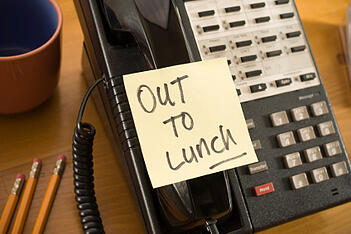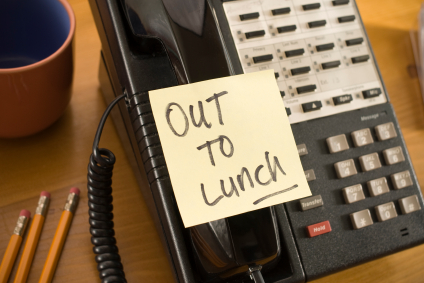 Even When it Comes to Lunch Breaks!
Even When it Comes to Lunch Breaks!
Isn’t it odd that oftentimes several organizations offering the same product or service can produce such different experience outcomes? If you’ve ever flown on an airplane, the experience between certain carriers is largely varied. Or, if you’ve been to the grocery store--there are major differences between the Wegman’s of the world and the “others”. I would suggest that an organization’s people and internal processes are what make the most difference in experience outcome. The physical setting sometimes plays into it--but you all know that “hole in the wall” restaurant that delivers great food, great service and a delightful experience.
At CSE we say that to deliver delightful customer experiences, your internal processes should be engineered--not left to happenstance--to be employee-focused and customer-centric.
Internal processes are one of the key elements in our eC2® model which supports a culture of service for employees AND customers. I recently had experiences with processes that didn’t follow this prescription…which ended up being not-so-delightful…at the doctor’s office.
I asked longtime friend and colleague, Jake Poore of Integrated Loyalty Systems if he could please explain to me why doctor’s offices are the only services that close in the middle of the day for “lunch”? Jake champions the patient experience with healthcare providers around the US and stated, “Small Primary care offices are generally not patient centered, they are RVU (Relative Value Units) or productivity centered.” Basically, this means that the doctors in these practices are paid by the volume and intensity of their work which leaves little incentive for engineering a great patient experience.
In this day and age, when lasers can remove gall bladders, one can Facetime friends halfway across the world, where customers demand and deserve to get what they need when they need it, I just can’t imagine why someone hasn’t figured out a way to, at the very least, “cover the lunch shift” at the doctor’s office.
In the last two days, I have run into this situation at two different medical offices:
- I went to my primary care physician for a suspected case of bronchitis. Sure enough, I’ve got it. The doctor “sent” (which I am assuming to be emailed, zapped, uploaded) my prescription to the pharmacy. By the time I got to the pharmacy (20 minutes later), the prescription request was not there and OOPS! the doctor’s office is closed for lunch. So now I have to wait 1 hour and 15 minutes until the doctor’s office opens again so I can call them back and have them send the prescription…and then make another trip to the pharmacy. Was I upset? Yes. If I was the yelling kind of person, would the innocent employees at the pharmacy have received my wrath? Yes. I would have called and shared my frustration with the responsible staff at the doctor’s office, but I couldn’t, they were off picnicking.
- This morning, I called to make an appointment for my husband at a different doctor’s office. The office is open from 8am-4pm. Great! I remembered at 8:02am to call. This is the message I received: “Thank you for calling (name of the doctor has been removed for privacy purposes)’s office. The office is now open. Our office hours are 8am-4pm, and we are closed for lunch from 12:15-1:30. The phones will open at 8:15.” Then some stuff about press “1” for blah blah blah and “2” for blah blah blah--which is all I heard at this point, because I can’t believe the phones open 15 minutes after the office. The message ended with, “Our phones are open from 8:15-12:15 and again from 1:30-4”… I was dumbfounded. Now I have to make arrangements to call again…in more than 13 minutes and less than 4 hours and 13 minutes because they need 15 minutes to prepare to receive calls?? And 1 hour and 15 minutes to eat lunch? Oy vey!
There is so much wrong with these two scenarios that to dissect it would effectively change this blog post to a white paper. So, I’ll sum it up this way:
To ensure delightful customer (patient, member, student, tenant, etc.) experiences, please only implement employee-focused, customer-centric internal processes.
If you don’t know whether your internal processes are employee-focused and customer centric, you can do two things:
- Count your complaints
- If you don’t have any complaints, maybe people just aren’t talking. In that case, ask your employees and your customers what YOU can do to better serve THEM.
Jake continues, “Many healthcare providers have forgotten that patients have choices...just like where to shop, mail a package and eat lunch...without putting patients first, the patient will defect.”
We know that consumers, like patients, make choices based on their experiences. And I have visited several places in my lifetime--the mall, my insurance agent, the grocery store, the Department of Motor Vehicles, the post office, the auto repair shop and heck, even the bank (with notoriously short operating schedules-think “banker’s hours”) that don’t close for lunch. This is different from “intermission” at the theater and “halftime” at the ball game--where people don’t work in shifts. Rather, they are all part of one cast or team and all need to be present at once for their customer. I still can’t figure out “lunch hour” at the doctor’s office…
I have the best ophthalmologist in the world. I am not sure she is world-accredited or whatever, but I can confidently say she is the best doctor I have ever had, and she has figured out how to cover the lunch shift; so, it can be done! After each appointment I have with her, I receive a survey in the mail asking me about my visit, how it went, what could make it better. I bet she is so great because she asks people…then acts on it.
So, if you want your customers to rave about you and your organization, give them something to rave about. It doesn’t need to be free chocolate chip cookies at the front desk, or massages while you wait. Better yet, it should be consistent, employee-focused and customer-centric internal processes…which make it easy for your employees to serve their customer and easy for the customer to do business with you.
That’s it. End of story, I’m going to lunch! (Don’t worry- the office is covered)
- For a funny take on a receptionist that follows a strict “non customer-centered” process, to the detriment of her patients, watch this VIDEO!





